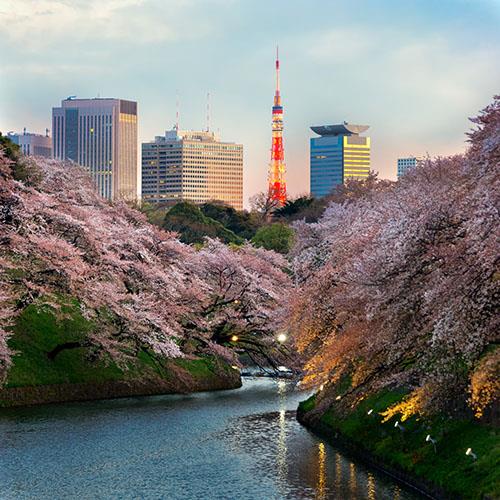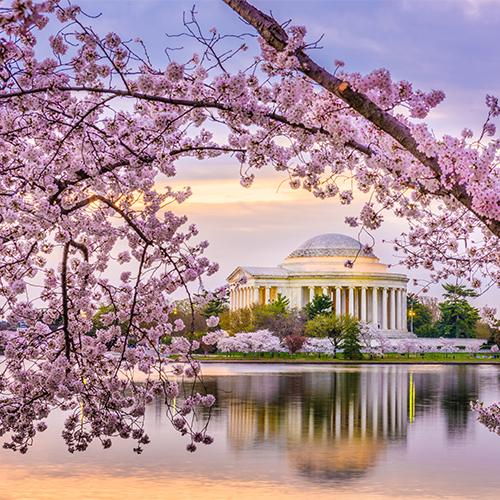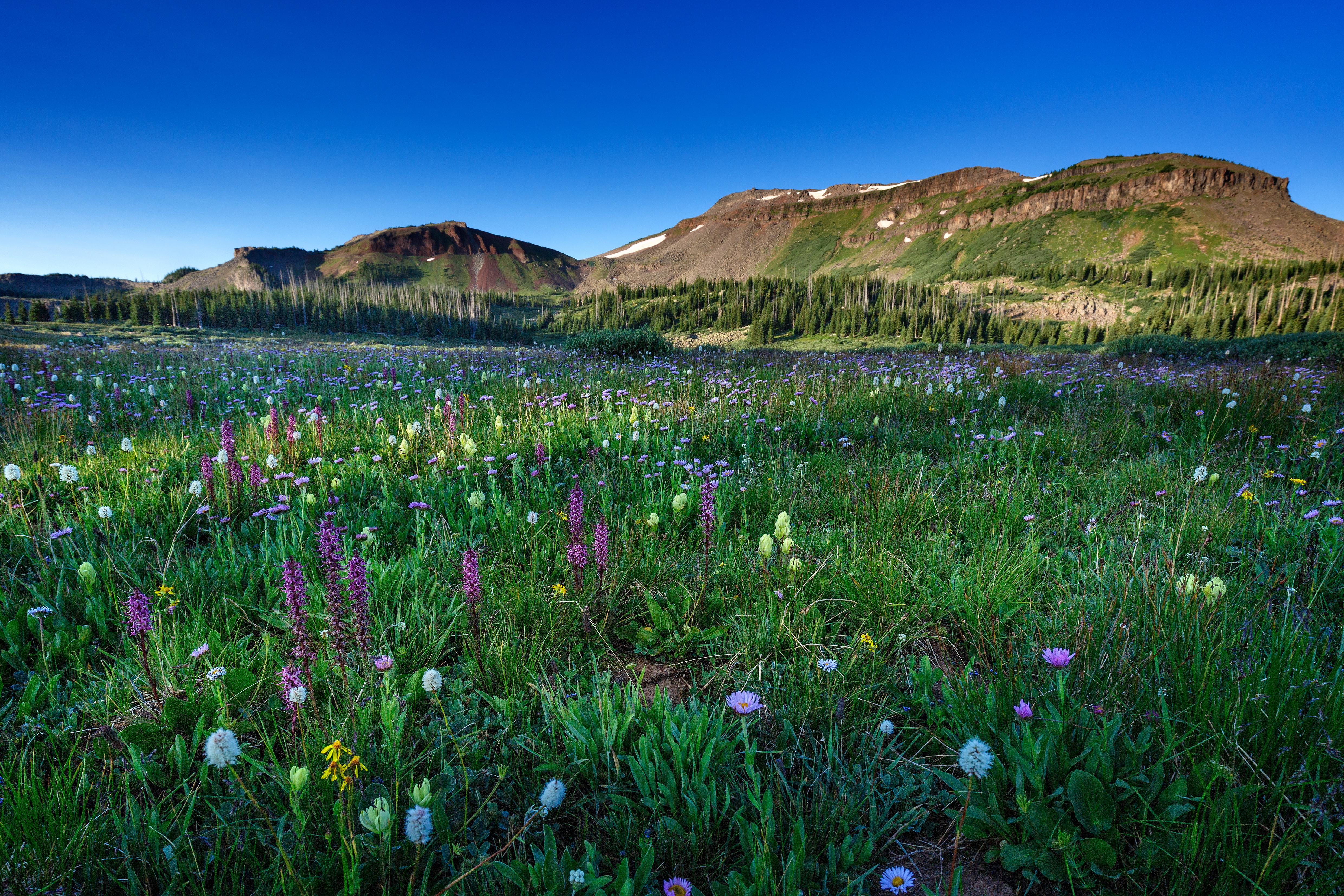Absolutely nothing beats the simple joy and beauty of a colorful display of flowers. Throughout the year, and all over the world, you can find beautiful floral displays. While most people pause to enjoy the fresh blooms in a neighbor’s yard or the impeccable grounds of their favorite botanical gardens, we have rounded up the most well-known, favorite, and unique flowers to be found worldwide. Dive into this list of the world’s favorite flowers and learn where and when you can find them, then make your plan to stop and smell the roses (or tulips, or poppies ..).
Tulips: An iconic symbol of rebirth
Tulips, perhaps today most famously associated with the Netherlands, have actually been cultivated in Constantinople (modern-day Istanbul) from the time of the Ottoman Empire. A romantic story tells of tulips springing up from the spilled blood of a lovelorn Ottoman Prince. Because the flower is prolific in early spring and tied closely to the legend, it is no surprise the flower has come to symbolize rebirth.





If you want to know where to find tulips around the world, we must recommend the Netherlands where they bloom from late March to mid-May. At about the same time, Ottawa comes alive with tulips, a gift from the Dutch for sheltering the royal family during the Second World War. In the USA, tulips are grown famously in Holland, MI and in Hillsboro, OR (find them in bloom from April through May). In Europe, Lake Geneva in Switzerland is home to an annual tulip festival and so is Emirgan Park, along the Bosphorus in Istanbul – both begin in April! In the southern hemisphere, the tulip isn’t as widely celebrated, but it is incredibly popular in the Tasmanian Coast of Australia, where it blooms in their spring period between September and October.
Roses: The world’s favorite flower
Roses originated in Central Asia nearly 5,000 years ago and remain one of the world’s favorite flowers, from the English and Damask garden roses to the new hybrid species and wild roses. This beautiful flower comes in five traditional colors with very different connotations: Crimson symbolizes love, Pink is for gratitude, Orange is for passion and connection, Yellow is for friendship, and White symbolizes innocence or purity. Thanks to innovative crossbreeding roses are also available in stunning colors combinations.
With their sweet smell and delicate taste, it is no surprise that rose petals are harvested for use in essential oils, perfumes, and skin care as well as salads and desserts.






Our favorite places around the world to see the myriad varieties of these timeless beauties are the Kew Botanic Gardens in London, Princess Grace Rose Garden in Monaco, Valby Park in Copenhagen, the Rose Valley near Plovdiv in Bulgaria, Sakura Rose Garden near Chiba, Japan, the slopes of the Al Hajar mountain ranges of Oman, the Rose Valley near Boumalne Dades in Morocco, the Botanical Gardens in Montreal, the John and Mable Ringling Rose Garden in Sarasota, FL, Peggy Rockefeller Rose Garden in New York City, Columbus Park of Roses in Columbus, Ohio, and in the highlands of Quito, Ecuador. Roses bloom regularly from March through June, except in Quito where the favorable climate means they can bloom year-round!
Lavender: Dreamy fields inspire serenity and calm
With its stunning purple shades of indigo, lilac, and amethyst which symbolize royalty, elegance, luxury, balance, and divinity, it is no wonder lavender flowers have come to be associated with purity, devotion, grace, and calmness. Lavender is a member of the mint family and originated in the Mediterranean, Middle East, and India some 2,500 years ago.





Lavender has long been used for its medicinal properties (especially for its calming scent) and in foods, particularly in the traditional Herbs de Provence blend. It has become popular for use in essential oils for sleep aides, headaches, minor cuts or burns, and is added to soaps and creams, and more beauty products. Today the flower, whose name comes fittingly from the Latin lavare (to wash), can be found around the globe.
Our favorite places to experience the calmness and divinity lavender stimulates include: Provence in France, Yorkshire in England, and Hvar in Croatia (June through August); Beijing, China and Hokkaido, Japan (May and June); Mt. Hood (near Portland, OR) and Sequim, WA, known as the “Lavender Capital of North America” (from June through August); the Victoria region in Australia (from November to February), and in the Franschoek wine region of South Africa (in September and October).
Cherry Blossoms: A spring tradition signifying renewal
Blooming cherry trees herald the arrival of spring and all its promises of renewal, but few people know the widespread popularity of this beautiful and delicate flower (outside the well-known festivals in Washington D.C. and Tokyo)! Coincidentally, the cherry trees were offered to the USA from Japan as a symbol of friendship between the two nations. Though D.C. gets (almost) all the attention, the world capital of cherry trees is actually Macon, Georgia! A local businessman fell in love with the trees and imported them to his hometown in the early 20th century.







We love the colors and the fragrance that come with cherry blossoms, and you can appreciate them too. Our favorite places to find them include Washington D.C., New York City, Martha’s Vineyard and Boston in Massachusetts, Macon, GA, Portland, OR and Oahu, HI in the United States; Vancouver and Victoria, British Columbia in Canada; London, Paris, Amsterdam, Dublin, Edinburgh, Bonn (Germany), the Jerte Valley near Caceres, Spain, and Vilnius, Lithuania in Europe; and São Paulo in Brazil. The trees bloom typically between February and May annually in all the above-suggested cities, save for Brazil where they wait until July! So get out there – visit one city for their festival or make the most of your time and combine multiple popular cities like London, Paris & Amsterdam or Boston and New York City!
Poppies: How the world collectively recognizes and remembers the sacrifices of war
Poppies are an enduring symbol of remembrance, bravery, and sacrifice. The flowers flourished on the soil churned up on battlefields, especially on the Western Front after WWI as written about in the popular poem “In Flanders Fields.” When used in wartime commemorations, red poppies, in particular, are believed to represent respect and solemnity for fallen soldiers. Otherwise, the poppy can represent eternal sleep (as immortalized in the classic film The Wizard of Oz), which is another reason they are commonly left at gravesites.





Poppies are a wildflower, which means they pop up in fields around the world. So, we have gathered a few suggestions for our favorite places where they are abundant: First of all, the poppy is the state flower of California, so it is no surprise they can be seen throughout the state. They begin blooming in mid-February and last through May (typically). Antelope Valley, outside Los Angeles, is home to a state-protected Poppy Reserve, and the fields near Encinitas and Carlsbad are also very popular to see the poppies annually. We also suggest a drive along the famous Pacific Coast Highway, with a focus on the stretch of Big Sur, CA, where the Santa Lucia Mountains rise abruptly above the Pacific. In Europe we recommend France, Spain, and Italy where poppies flourish in spring, usually beginning in March and ending in May. Fields of the beautiful flower can be found in the Alsace-Lorraine and the Normandy regions of France (check out the Norman Countryside or the Cote Fleurie); in beautiful Tuscany (particularly outside Siena) and on the island of Sicily, Italy; and in fields outside Toledo, Spain! Finally, New Zealand (whose ANZAC soldiers fought in WWI and WWII with the Allied powers) has poppy fields on both its islands. In the South Island, you can find poppies wild near Lake Hawea outside Queenstown, and in the North, you can find poppies blooming in the almond groves near Taupo.
Sunflowers: The flowers that adore the Greek sun-god
The sunflower is rooted in Greek mythology (though not native to Greece at all), as it is said to be Apollo’s lover Clytie who turns her head to watch the sun god on his journey. This is the explanation for why the flowers turn to keep their faces towards the sun. However, the cheery summer sunflower can be found throughout the world, and depending on where you are it can take on various myths and meanings. The most overlapping meanings relate to adoration, good fortune, vitality, bounty, and harvest, and it is not hard to understand why. They grow in bountiful clusters, they have provided seeds and pigments to civilizations for millennia, and they are just so darn bright it’s hard to look at them not admire them.






The inspiring sunflower is native to the Americas, which may explain its widespread presence across the United States. Wild sunflowers can be found in Badlands National Park (near Rapid City, South Dakota) and across the vast plains of North Dakota (check out Bismarck or Dickinson). Though Kansas is known as the Sunflower State, they are edged out by North Dakota as the top producer of the flower! Still, check out the farms just outside Topeka for beautiful sunflowers. Elsewhere in the USA, Eau Claire, WI, and Knoxville, TN are both well known for their sunflower fields. Plan your trip for summertime, as sunflowers bloom beginning in July and tend to continue into late summer or early autumn, sometimes as late as October. In Europe, Spain is famous for its sunflower fields in Andalucia, particularly around Cadiz and Jerez. Though the Greek god Apollo inspired the myth of the sunflower, in Greece not many areas have sunflowers growing wild. Most commonly you might find them in the countryside near Nafplion. A little farther north, you can find sunflowers in lovely Macedonia: check out Skopje or picturesque Lake Ohrid. In Asia and the Pacific, the sunflower is a popular flower for bringing good luck and tends to thrive in September and October. We love Guangzhou in China and Cebu in the Philippines for their sunflower fields and gardens, respectively, though you can also find wild fields of sunflowers throughout Thailand and Vietnam! So, if you find yourself in need of a pick-me-up, don’t overlook the sunny disposition of this beloved flower, and don’t limit your imagination! You can find them strewn across the globe.
Need more? Our Honorable Mentions:
There are hundreds (well thousands, actually) of flowers around the world. It is impossible to get to all of them. We apologize if we missed your favorite. Here are some of our Honorable Mentions – Some may surprise you!

Almond Orchards: Almonds are grown around the world, but most people do not know how beautiful the trees are. Their flowers are often likened to cherry blossoms. Our favorite spots to see them include Spain (particularly Denia (pictured), Santiago del Teide on Tenerife Island and Mallorca Island); the Atlas Mountains of Morocco; and in California on farms just outside Sacramento. Plan your visit to these destinations for January or February when the trees are in bloom!
Wildflowers: The ultimate rebels: wildflowers are uncultivated, grow freely, and they shun human intervention. Our favorite places to celebrate these unruly beauties are quite varied. In the USA we absolutely recommend Crested Butte, Colorado for its annual wildflower festival held in July or Ouray, CO, near San Juan National Forest (pictured); Glacier National Park in Montana, and Gatlinburg or Pigeon Forge in the Great Smoky Mountains of Tennessee (plan for these in late summer and early fall). Baja California in Mexico is popular for its “super bloom” season February and March, and elsewhere in the world, you will love Brasov or Cluj-Napoca in Romania in the spring and summer; Killarney in County Kerry, Ireland; and Perth, Australia in their summer months (December to February).


Jacaranda Tree: Though the beautiful blue-purple flowers of the Jacaranda are known for originating in Brazil, it has taken off in popularity across the world! You can find them throughout South Africa (particularly in Johannesburg (pictured) and Cape Town) in September and October; in Australia where they hold a Jacaranda festival in New South Wales in October and November; in Europe, the tree is popular in Valencia and Seville, Spain, Lisbon, Portugal, Athens, Greece, and Malta Island. In the USA, the tree blooms in April through June and again in September. They are found predominantly in Texas and Florida (check out San Antonio or beautiful Naples).
Patios of Cordoba: Okay, so this isn’t one type of flower – it is a competition called the Feria de los Patios. It’s held in May each year in Cordoba, Spain – where patios and courtyards around the city are decorated, and the winner is announced at the end of the month. Though the vast majority of Cordoba’s open patios belong to private homes, the centerpiece of the event is the 15th century Palacio de Viana, used over the centuries as a residency for Spanish royalty. The tradition grew, as so many things do, out of necessity. Being so hot in the summer the inhabitants needed the shaded patios to escape the oppressive heat, and the festival blossomed (pardon our terrible pun). It is so important to the culture that UNESCO acknowledged the competition as a protected cultural patrimony in 2012. Don’t hesitate to plan your trip to experience this wonderful piece of Spanish heritage!

If you enjoyed this blog post and you are interested in further reading about the beautiful world around us, explore some of these other interests! You never know when or where inspiration will strike.



